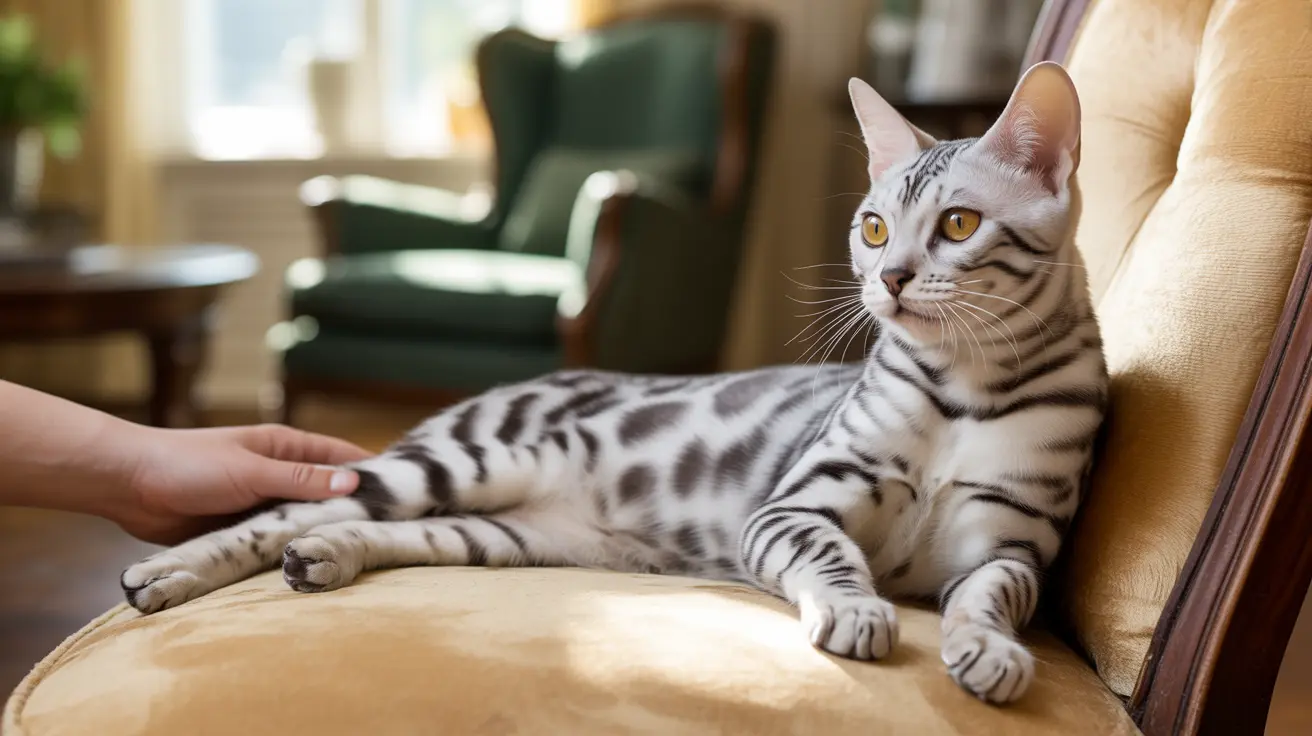The Science Behind Tail Base Sensitivity
The base of a cat's tail is an incredibly sensitive area due to a high concentration of nerve endings. This region contains specialized sensory neurons that send powerful signals directly to the brain, often triggering the release of pleasure-inducing endorphins. Additionally, this area houses important scent glands that play a crucial role in feline communication.
The tail itself is an extension of the spine, containing numerous vertebrae and muscles that make it both flexible and sensitive. This combination of anatomical features creates what veterinarians often refer to as a "hot spot" for sensory stimulation.
Understanding Your Cat's Reaction
When you scratch the base of your cat's tail, you might notice several common responses:
- Elevated hindquarters and arched back
- Intense purring and vocal responses
- Rhythmic kneading with their paws
- Muscle twitching or rippling
- Heightened alertness or excitement
These reactions are typically positive signs indicating your cat is enjoying the experience. However, each cat has its unique preferences and sensitivity levels, which is why some may react differently.
The Role of Scent Glands
At the base of your cat's tail are special scent glands called caudal glands. When this area is scratched, these glands become activated, releasing pheromones that serve multiple purposes:
- Marking territory
- Communicating with other cats
- Establishing social bonds
- Indicating reproductive status
When to Be Cautious
While many cats enjoy having the base of their tail scratched, it's important to recognize when this attention might be unwanted or problematic:
- Watch for signs of overstimulation
- Pay attention to sudden behavioral changes
- Notice if your cat becomes aggressive
- Be aware of excessive grooming in this area
Any dramatic changes in how your cat responds to tail base scratching could indicate underlying health issues and should be evaluated by a veterinarian.
Frequently Asked Questions
Why do cats often raise their hindquarters and purr when the base of their tail is scratched?
Cats raise their hindquarters and purr because the nerve endings in this area are highly sensitive and stimulation triggers a pleasure response. This behavior is also associated with social bonding and can remind adult cats of being groomed by their mother as kittens.
What makes the base of a cat's tail such a sensitive and pleasurable spot to scratch?
The base of the tail contains a high concentration of nerve endings and sensory neurons, along with scent glands. This combination makes the area particularly responsive to touch and can trigger the release of endorphins, creating a pleasurable sensation.
Can scratching the base of a cat's tail ever cause negative or aggressive reactions?
Yes, some cats may react negatively due to overstimulation, past trauma, or underlying medical conditions. If a cat shows signs of discomfort or aggression, it's best to avoid scratching this area and consult with a veterinarian if the behavior seems unusual.
How do the scent glands at the base of a cat's tail influence their behavior when scratched?
When scratched, the caudal glands release pheromones that cats use for territorial marking and social communication. This release can make the experience more significant for cats and may contribute to their positive response.
How can I tell if my cat enjoys or dislikes having the base of their tail scratched?
Positive signs include purring, relaxed body language, and seeking more attention. Negative signs include tail twitching, skin rippling, growling, hissing, or attempting to move away. Always respect your cat's individual preferences and body language.
Final Thoughts
Understanding why cats enjoy having the base of their tail scratched provides fascinating insight into feline behavior and biology. While many cats find this interaction pleasurable, always remember to respect your pet's individual preferences and pay attention to their body language. This knowledge can help strengthen the bond between you and your feline companion while ensuring their comfort and well-being.






